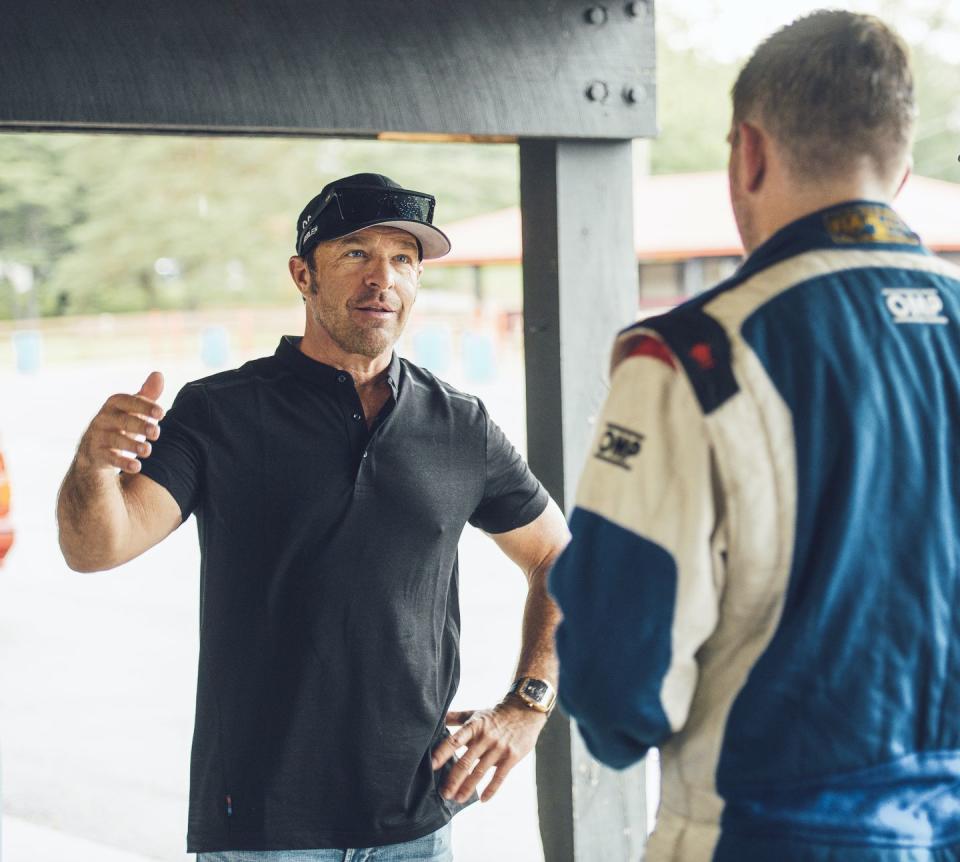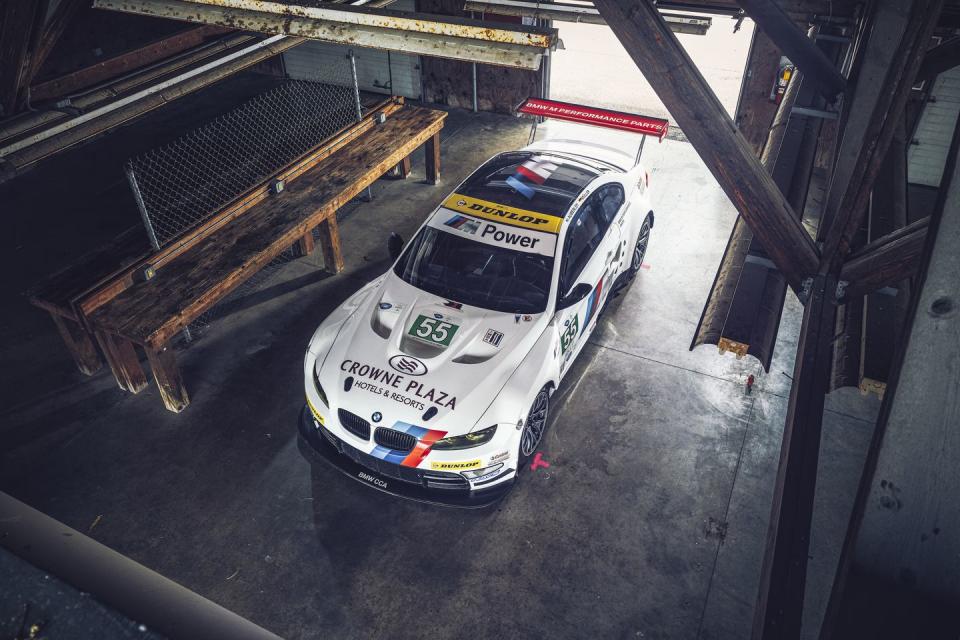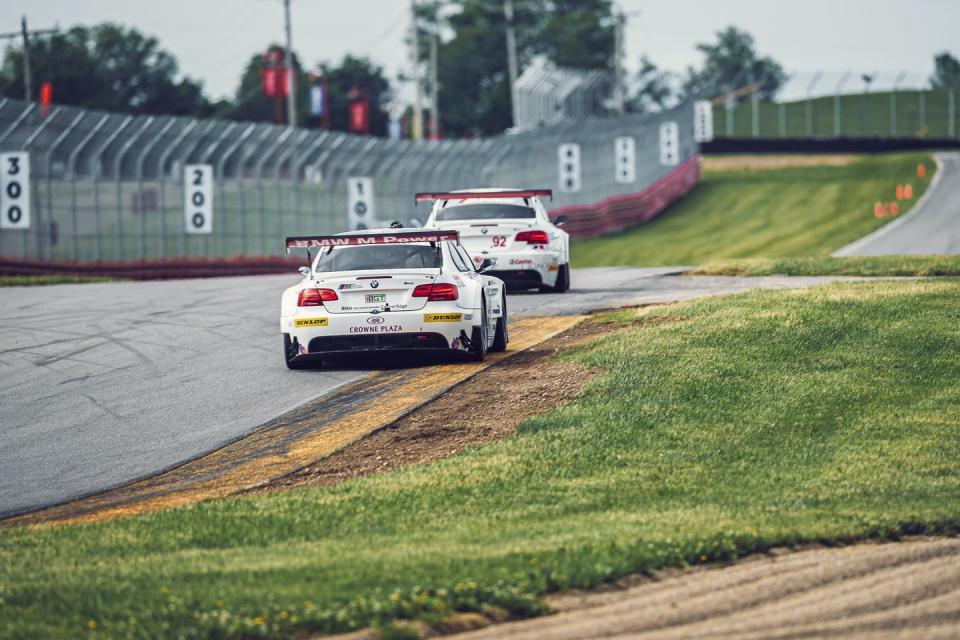How Data and Instruction Can Close the Speed Gap
"Hearst Magazines and Yahoo may earn commission or revenue on some items through the links below."
My brain hit a wall. No matter what I tried, no matter what I did, I just couldn’t go faster. My lap times at Mid-Ohio were consistent. But while I thought that I was pushing the 2011 ex-IMSA BMW E92 M3 GT, it was clear I wasn’t improving.
The point was driven home once Bill Auberlen got in the car and thoroughly embarrassed my lap time.
Auberlen has been racing for a long time. He ran his first 24 Hours of Daytona in 1987, the year I was born. He’s BMW’s longest-tenured factory driver, with more than 500 races to his credit, and he hasn’t slowed down a bit over his career. He’s also impossibly cool, California in human form. Now 52, Auberlen is still at the top level of sports-car racing, and he’s still winning.
This story originally appeared in Volume 7 of Road & Track.
SIGN UP FOR THE TRACK CLUB BY R&T FOR MORE EXCLUSIVE STORIES
I am decidedly not a pro, though I do consider myself above average. I started racing karts when I was 12 and have been competing in endurance races in a variety of cars for the past seven years. I’m frequently at the top of my class, but the competition should not be considered cutthroat. I also don’t race every week; it’s not my job. I’m lucky if I get a couple of race weekends each year. Racing is Auberlen’s job, and he takes it extremely seriously.

Pro drivers are a different breed, able to do things with a car that others only imagine. Much of it is innate talent, the ability to exploit a car at the limit and do so repeatedly. There’s the understanding that choices involve risk, and a pro’s threshold for risk is higher than an amateur’s. And there’s the uncanny ability to brake that much later, to get on the power that much earlier, and to experiment and trust that if you make a mistake you’ll save the car.
But pros also use the latest generation of data acquisition and analysis, which can pinpoint exactly where a car can go quicker and where time was lost. Can that granular data help an amateur racer improve? There’s only one way to find out.
Before computers, driver improvement relied on practice, lead-follows, discussion with other drivers, and in-person coaching. Now, racing technology extends to extremely advanced software that plugs into a car’s brain to give details on throttle application and brake pressure, and GPS-based systems that track everything from g-loads to location data. We rigged up a video VBOX from Racelogic, which uses GPS mixed with video.
My first runs at Mid-Ohio were full of trepidation. While I know the track, the car was intimidating. This is a very real, very valuable race car, the one Auberlen actually ran in IMSA’s GT class in 2011 and 2012. In it, he finished second in class at Sebring in 2011 and won his class at Road America in 2012. Breaking it was not an option.

I took two brief orientation sessions to get used to the M3, with its button-laden steering wheel and hyper advanced traction control, before we began timing laps. This is really an E92 M3 in name only. It has an Xtrac sequential transaxle and a highly modified V-8 engine dubbed P65. There is no ABS and no stability control. It was the car to beat in IMSA a decade ago. After just a few sessions, it’s easy to see why.
It’s not hard to drive. At all. Initial intimidation gave way to joy. The carbon clutch was shockingly easy to use, the steering light and communicative, the brakes amazingly solid and confidence inspiring. After a few laps, I was comfortable enough to start going fast. Or so I thought.
Above: The author's quickest lap on day one was the final fast lap of this session.
I felt I was getting quicker in each timed session, braking deeper and feeling like I was carrying more speed in each corner. So much so that I had a hell of a moment at the end of the straight, locking the rear brakes yet somehow not spinning. I pitted in and handed the car to Auberlen. He was immediately on it in a car he hadn’t driven in years. He ran six laps, returning with feedback that I wouldn’t have been able to parse.
“You had a lack-of-experience problem with this car,” Auberlen told me. “The brake bias was dialed too far to the back. No wonder you locked them up.”
I’d never driven a car with adjustable brake bias, so there was no chance I would touch that knob.
A looming thunderstorm cut the session short, so we analyzed the data in the garage during the rain. While I was consistent in each session, there was no real improvement. My quickest lap time was 1:29.21, and all my quickest laps clustered around that mark. Bill, meanwhile, promptly laid down a time in the 1:26s. Then he hit a 1:25.35 on his final lap. With the videos running side by side, the differences were stark. Auberlen appeared to be qualifying for a race, and I looked like I was out for a weekend drive.
Above: Auberlen's set of fast laps on day one of our time at Mid Ohio.
I was just slower. There wasn’t only one spot where I was losing time, either. My braking points were earlier, and I was over-slowing for many corners. I wasn’t exploiting the drivetrain like him. And while our minimum speeds were similar, I was holding them far longer, the dearth of experience in the car and lack of confidence in myself holding me back. Bill is human; all racers are. So how does a pro keep his foot planted when a regular driver’s brain says to lift? They have no choice.
“If one of my teammates does something quicker than me, and I see it in the data or on track, I just go out and do it,” Auberlen told me. “My choice is to either do it and keep my job, or go too slow or crash and lose it.”
It’s not something we think of as fans of the sport, but it’s obvious. Pro drivers are paid for their services. If they are slower than someone else, they’re eminently replaceable.

Ross Bentley is a former IndyCar driver, a current driver coach, and the guy who literally wrote the book on performance driving—a series called Speed Secrets. He went over my data and video with me.
“At this level, the difference between Bill and another pro is pretty small. In some ways Bill can look at his data and go, ‘Well, I’ll just go and do that because it’s not a huge leap of faith.’ Whereas for you, first time in the car, the gap is bigger and you’re going, ‘Really? It can do that?’”
Certain parts of Mid-Ohio are hairy, particularly Madness, a blind crest that leads into the winding Thunder Valley. Auberlen had the traction control chattering away through the whole thing, foot to the floor. Even though he kept telling me to lean on the TC, I just couldn’t make myself do it. I hadn’t reached the car’s limit; I’d artificially created one for myself.
“You don’t do what you want sometimes because you don’t have the right mental programming yet,” Bentley told me. “Bill has all that programming. You build that through repetition, whether it’s physically doing it or mentally doing it. Bill would keep his foot in it, and the platform would stay flat and stuck. And especially aero cars with any downforce coming from the bottom of the car—they like that platform to be stable. The second you do that little lift, you go whoop-whoop, and the center of pressure moves and you’re going, ‘I have to lift even more.’ It’s a self-fulfilling prophecy. You created this limit, so now you’ve got to live it. It’s pushing through that.”
There’s also intimidation. Auberlen and I are at very different points in our driving careers in that he has one and I don’t. He’s a professional compensated to go fast. I spend most of my time bouncing my fingers on a keyboard. If something happened while he was in the car, like a spin—well, that’s what can happen when you put in a pro who’s going to push. If it happened while I was in the car, the risk would not just be embarrassment but damaging a piece of equipment I’m lucky to even touch.
I spent the night watching Bill’s laps and looking at his data. In the morning, I’d have another chance.
Data Analysis: Day One
Racelogic’s VBOX uses video, GPS, and GLONASS satellite data to give an eye-opening look at where you can be faster. It allows you to compare multiple runs to examine driving lines, top speeds, g-loads, sector times, and more. Bill Auberlen’s quickest lap from day one is marked in green below, while mine is marked in red. The differences are a useful learning tool for the next time out. - T.O.

A. Mid-Ohio’s first turn is fast. Auberlen brakes less, turns in later, and uses a wider line to carry speed. I make the track tighter.
B. While my minimum speed in the Keyhole is the same as Auberlen’s, he gets back to power sooner.
C. Our top speeds arecomparable (148mph versus 150)...
D. ... but Auberlen brakes later and more sharply, then gets back to power sooner and more aggressively.
E. Auberlen carries nearly 15 mph more into Thunder Valley. Simply ridiculous.
F. Auberlen stays flat through nearly all of the fourth sector.
G. The final sector’s fast left-hander is where Auberlen just has trust in the car, but the final corners see a similar data trace.

The next day, I swallowed a brave pill and got back in the car. I worked on the things Bill told me the day before: relying on the traction control, staying flat in areas of the track where I thought I couldn’t, and, most of all, braking later and keeping midcorner speeds up. When I pitted in from my first run, Auberlen came to the car. He seemed excited.
“You sound like a different driver today,” he said.“You’re braking later. I can hear the traction control more. Great.”
A stopwatch backed up that I was quicker, knocking nearly two seconds off the prior day’s times. Bentley later told me that a driver new to the car would likely knock off half a second on day two, so that much of an improvement was impressive.
Before we got a chance to look at the data, Auberlen wanted to try something else. He hopped in another E92 GT, this one from the 2009 season, to do a lead-follow. That car was slower than the 2011 update, was on old tires, and hadn’t been run in a while, but I don’t think there was any concern that I’d be quicker than him.

Videos and data traces are excellent ways to learn, but following directly behind someone, particularly a championship-winning pro, can’t be beat. I chased Bill for about eight laps, gradually catching him during the run, likely because he was letting me.
The data from that run should have told the full story. It should have shown the full improvement. And it should have had a kickass video of two M3s chasing each other at one of America’s best tracks. Except I didn’t push the SD card all the way in. There was no data recorded. No video to analyze. No official lap time or improvement to brag about.
The thing is, that final session taught me far more than any of the data or video did. Learning directly from a master of his craft in the moment, watching how he handles the car while following his line—that is where the magic happens. Sure, data shows objectively where you’re quicker or slower and provides a window into different driving styles, but where it helps in lapping, it can fall short in racecraft. Plus, a lead-follow doesn’t rely on a functioning memory card.
Interpreting data helped me shave seconds off my lap times, getting me closer to the limits of the car. But it was chasing a pro that helped me get past my own self-imposed barriers. I had faith. My brain stopped hitting that wall. I pushed through.

You Might Also Like

 Yahoo Finance
Yahoo Finance 